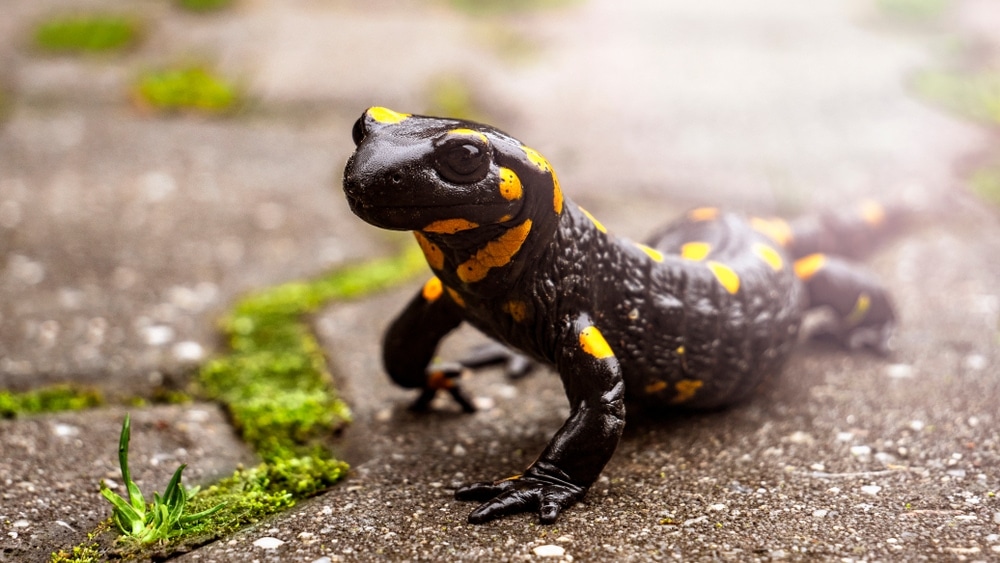
They look like lizards, act like frogs, and are only found in the Northern Hemisphere. Salamanders are special creatures, filling unique roles in their ecosystems.
From only a few inches long to the largest amphibian on the planet, salamander species have a wide range of characteristics. With all the different kinds of salamanders it can be challenging to understand what makes a salamander a salamander and how they’re related to each other.
We’ve created a resource guide to answer those questions. Read on to learn about the different families of salamanders, interesting species in each family, and the top facts about salamanders.
Salamander Classification and Species
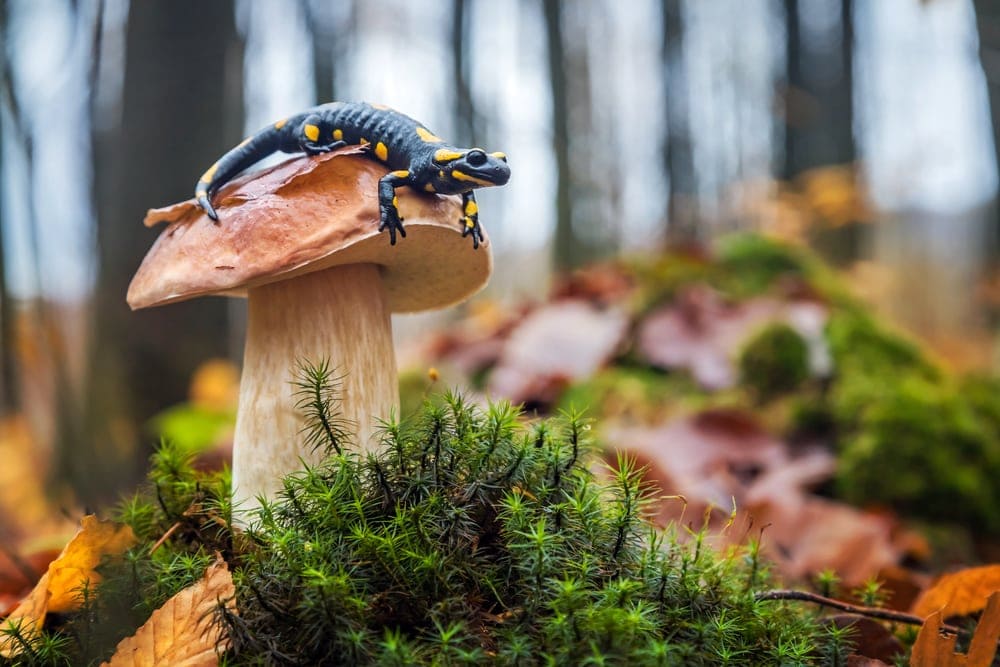
There are about 740 living species of salamanders, organized into ten families within the order Caudata. Salamanders are characterized as amphibians with four legs, tails about as long as their body, and moist skin.
Like other amphibians, salamanders can’t live far from water. Most salamander species live in damp areas on the land during adulthood but return to water to breed and subsequently have an aquatic larval stage. Some species are entirely aquatic and grow to be much larger than terrestrial species.
Salamanders have been found in the fossil record as far back as the Jurassic period. We outline the three suborders and ten families of salamanders alive today. A fourth suborder and four additional families have been observed only in fossils.
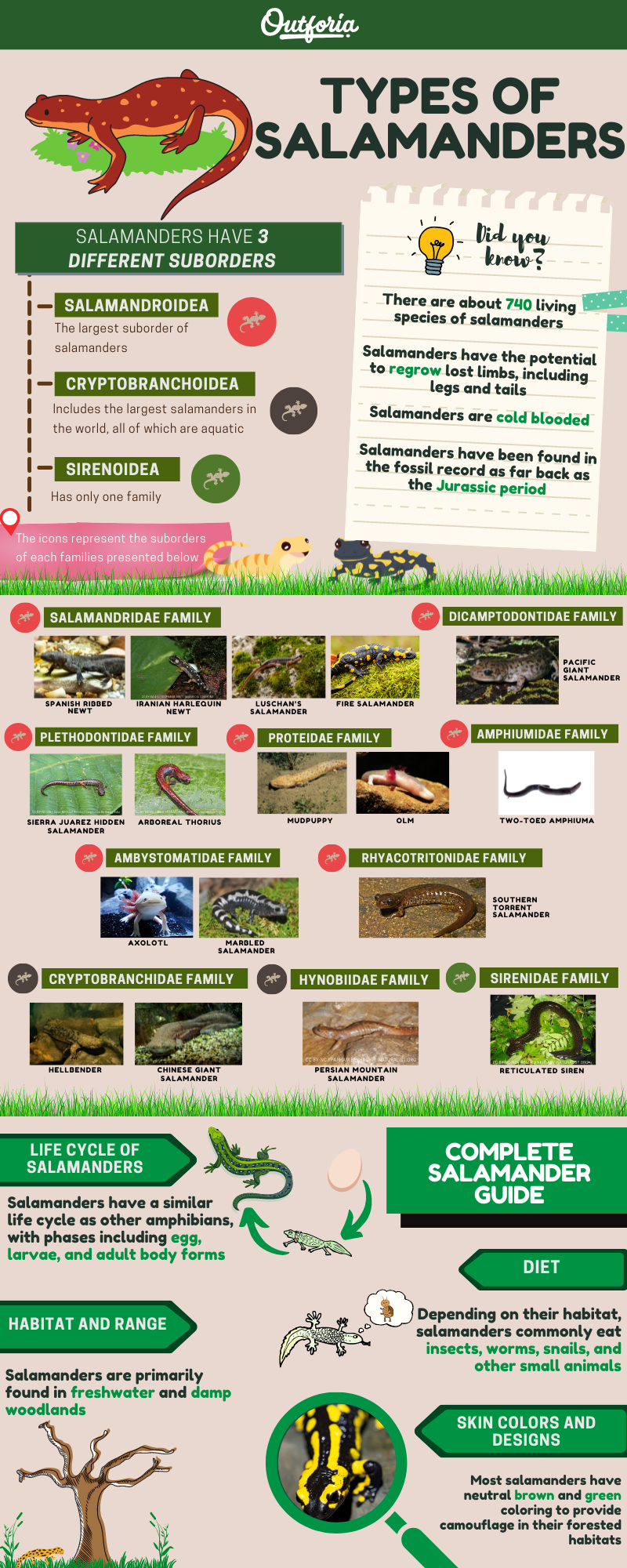
Share This Image On Your Site
<a href="https://outforia.com/types-of-salamanders/"><img style="width:100%;" src="https://outforia.com/wp-content/uploads/2021/12/Types-of-Salamanders-infographics-2.png"></a><br>Types of Salamanders Infographic by <a href="https://outforia.com">Outforia</a>You May Also Like: Be Amazed To These 25 Fascinating Types of Lizards with Photos, Infographic, Fun Facts & More!
Suborder Salamandroidea (Advanced Salamanders)
The largest suborder of salamanders is Salamandroidea, also known as advanced salamanders. This suborder includes seven families, which are outlined below.
1. Salamandridae Family – Newts and True Salamanders
The Salamandridae family includes newts and true salamanders. Within this family, there are fifteen genera of true salamanders and over fifty species of newts. All members of the Salamandridae family are toxic, with either poisonous skin or glands that secrete poison when threatened.
The Salamandridae family inhabits a wide range, from North American to northern Africa and the southern foothills of the Himalayas.
Newts differ from true salamanders by their lack of rib or costal grooves along the sides of their body. They’re also often much smaller than true salamanders and more likely to be brightly colored.
1.1 Spanish ribbed newt, Pleurodeles waltl
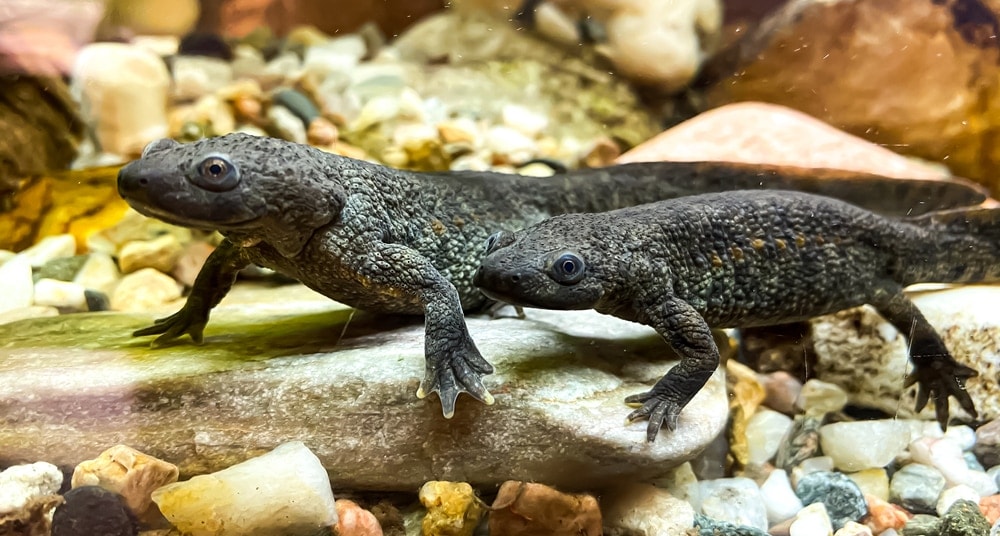
Spanish ribbed newts take self-defense to another level. These newts have poisonous skin as well as barbs along the sides of their body to protect them from predators. These barbs are actually ribs that can be forced through the newt’s skin when threatened.
Spanish ribbed newts range from dark to light gray in color and often have dark brown blotches, growing up to 12 inches (0.3 meters) in length. Spanish ribbed newts are found throughout the Iberian Peninsula and Morocco.
To adapt to this drier region, Spanish ribbed newts will hide under rocks or in crevices to stay moist during the dry season.
1.2 Iranian harlequin newt, Neurergus kaiseri
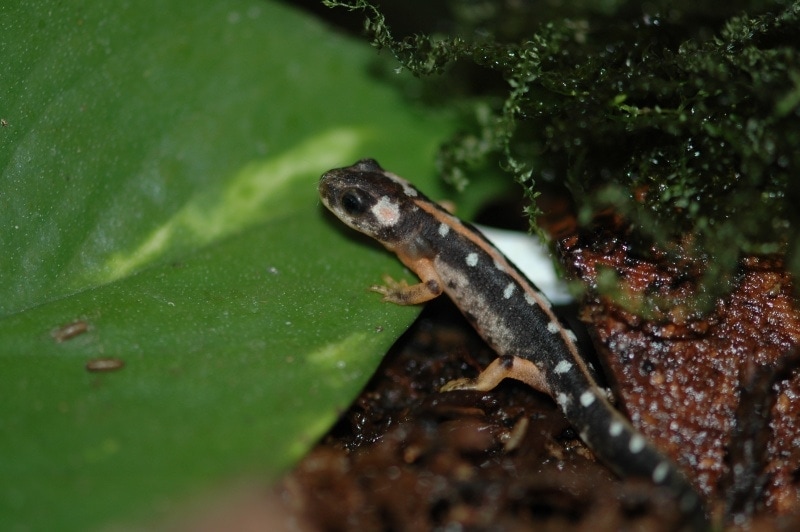
Iranian harlequin newts have a very localized range, found only in mountainous areas of the Lorestan Province. These newts, also known as Kaiser’s spotted newts, are brightly colored with red, yellow, black, and white markings and grow up to 5 inches (0.1 meters) in length.
The rainy season in their mountainous range only lasts a few months, so Iranian harlequin newts have a unique adaptation. They have been observed to hibernate during the dry season when small streams and other water sources have dried up, rather than hibernating during the winter to avoid the cold weather.
1.3 Fire salamander, Salamandra salamandra
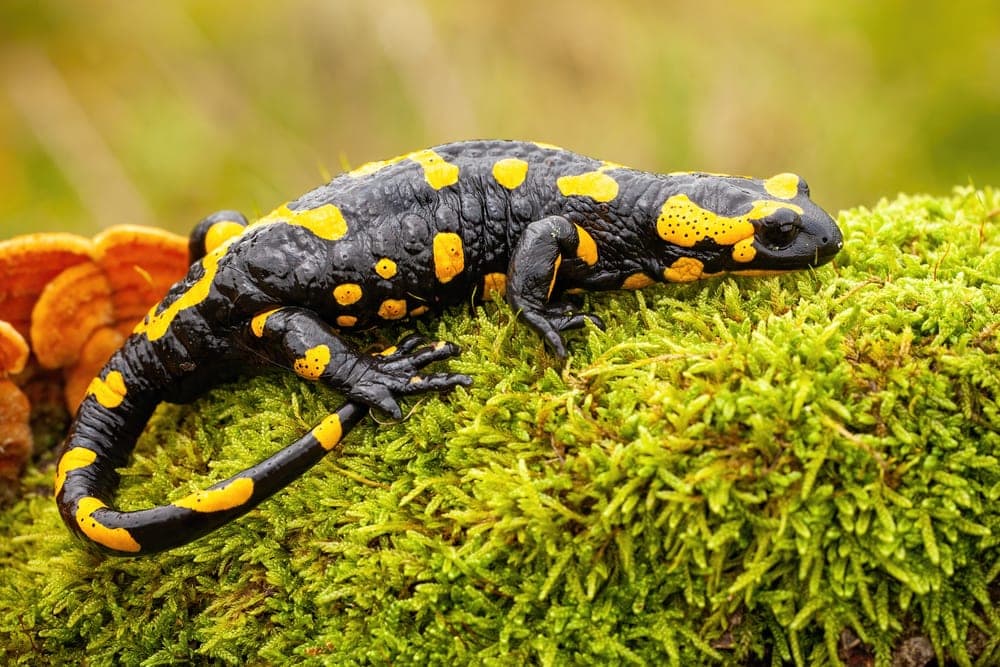
Fire salamanders are one of the more recognizable salamander species. Found in woodlands throughout central Europe, these salamanders have a distinctive black and yellow coloring and grow up to 12 inches (0.3 meters) in length. There are up to nine subspecies of Salamandra salamandra, separated geographically through habitat fragmentation.
Fire salamanders are named for the early European myths surrounding salamanders. This species hibernates inside dried logs and was commonly seen crawling out of fires when their hibernation homes were placed in fires during the winter months.
1.4 Luschan’s salamander, Lyciasalamandra luschani
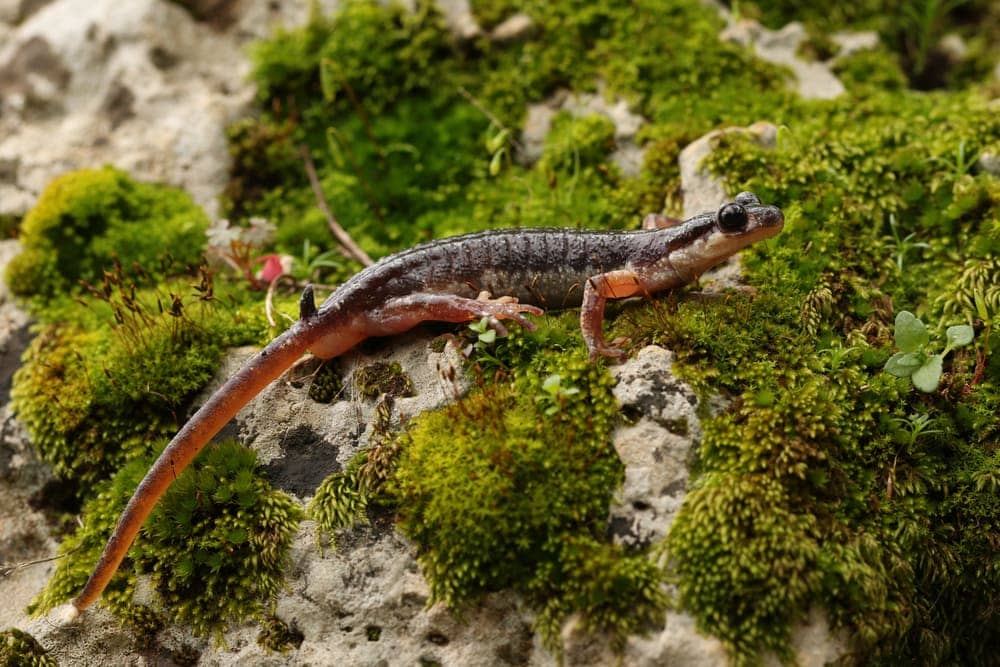
Luschan’s salamander is recognizable by its bright yellow and orange marking, which vary through the three subspecies. This salamander species is found in temperate forests and Mediterranean shrubby vegetation in Turkey and Greece. Luschan’s salamander is also known as Lycian salamander, and can grow up to 5 inches (0.1 meters) in total length.
2. Plethodontidae Family – Lungless Salamanders
The Plethodontidae family includes lungless salamanders. This family of salamanders lose their gills when metamorphosing from larvae to adults, but they don’t grow lungs like other salamanders. Instead, salamanders in the Plethodontidae family breathe only through their moist skin.
Pleth comes from the Latin word for many and dont comes from the Latin word for teeth, so this family of salamanders is known for having many teeth. This family has the most diversity and is the only family that is really successful in tropical regions of the Northern Hemisphere.
2.1 Sierra Juarez hidden salamander, Thorius adelos
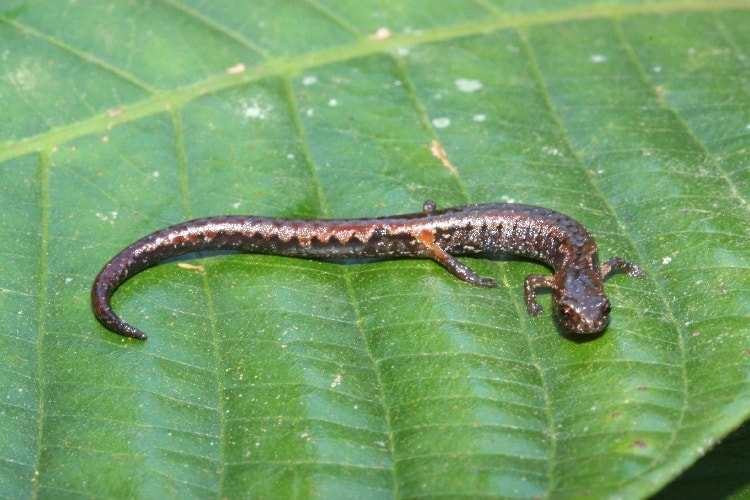
The Sierra Juarez hidden salamander illustrates the true meaning of plethodontidae. These salamanders have maxillary teeth just like most salamanders, but also have several teeth on the roof of their mouth. Sierra Juarez hidden salamanders are approximately 2 inches (0.05 meters) in length and are found only in the cloud forests near Oaxaca, Mexico.
2.2 Arboreal Thorius, Thorius arboreus
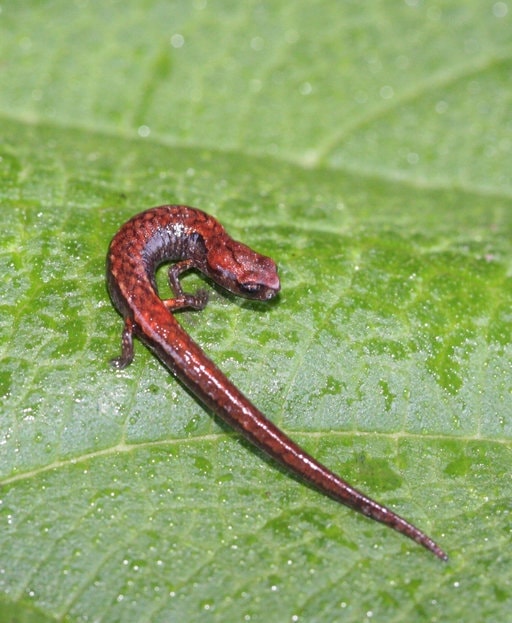
The smallest salamander species, arboreal thorius salamanders are approximately half an inch (0.01 meters) long. Arboreal thorius are brown in color with a reddish dorsal stripe and are only found at high elevations in the cloud forests of Mexico. This species of salamanders is listed as critically endangered by the IUCN.
3. Proteidae Family – Mudpies, Waterdogs, Olms
The Proteidae family includes mudpuppies, waterdogs, and olms. This family is characterized by paedomorphosis (incomplete metamorphosis) and are aquatic throughout their entire life cycle. Salamanders in the proteidae family are found in Europe and North America.
3.1 Mudpuppy, Necturus maculosus
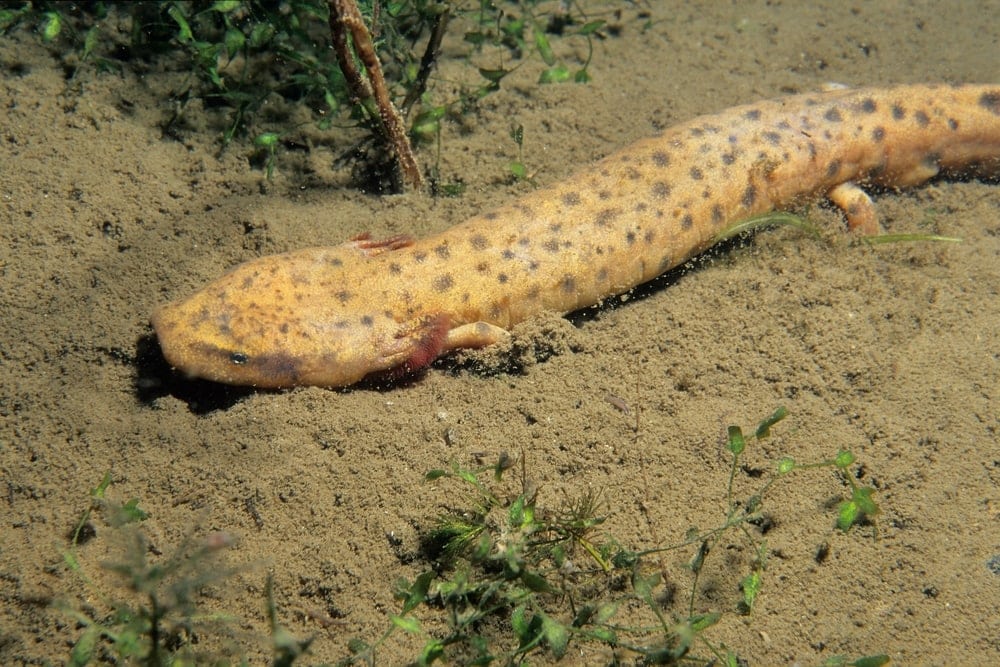
Mudpuppies are also known as waterdogs, and are one of the only salamander species that makes noise. Their name comes from the comparison of their squeaky chirps to the sound of a dog barking. Adult mudpuppies have external gills, grow between 8 and 13 inches (0.2 – 0.4 meters) in length, and can live eleven years in the wild. Mudpuppies live in the bottom of bodies of water in North America and are fully aquatic throughout their life cycle.
3.2 Olm, Proteus anguinus
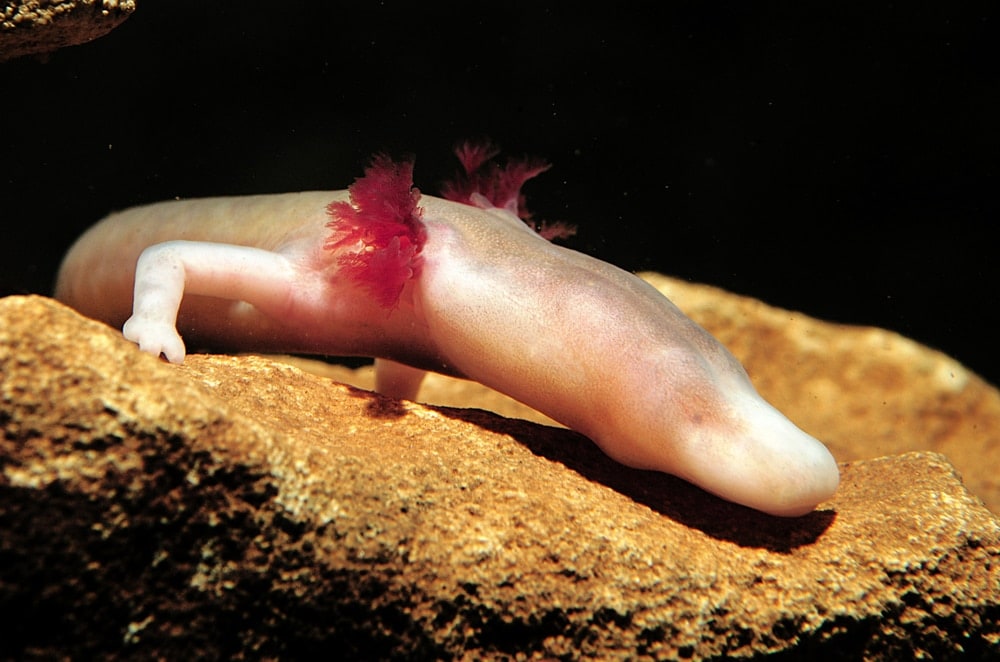
One of the more unique salamander species, olms are blind salamanders that live in caves in southeastern Europe. Olms retain their external, feathery red gills into adulthood and have been known to live past 100 years in the wild. These salamanders have adapted to life in the dark and while they have eyes as larvae, their eyes are covered by layers of skin as they become adults. Olms hunt with their ability to sense electricity in the water.
4. Ambystomatidae Family – Mole Salamanders
Species in the Ambystomatidae family are commonly known as mole salamanders. This family has a wide geographic range, throughout most of North America from Canada to Mexico City. Some species in the Ambystomatidae family undergo a complete metamorphosis, while others experience paedomorphosis and retain some juvenile features into adulthood.
4.1 Axolotl, Ambystoma mexicanum
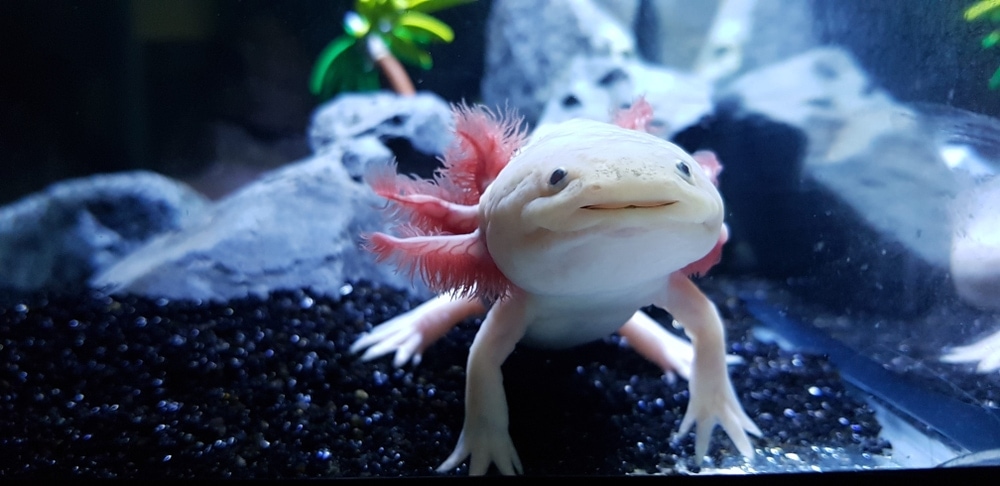
Perhaps one of the most recognizable salamander species, axolotls retain some larval features into adulthood. This is known as paedomorphosis. Adult axolotls still have external gills and both an upper fin along the spine and a lower fin on the bottom of the tail.
Generally axolotls are dark brown with black speckling, but color mutants are fairly common and include albino, white, and other colored individuals.
Axolotls are only found in Lake Xochimilco in Mexico City, with an estimated wild population below 1,000 individuals. Due to habitat loss, water pollution, and invasive species, the International Union for the Conservation of Nature and Natural Resources (IUCN) has classified the axolotl as critically endangered since 2006.
4.2 Marbled salamander, Ambystoma opacum
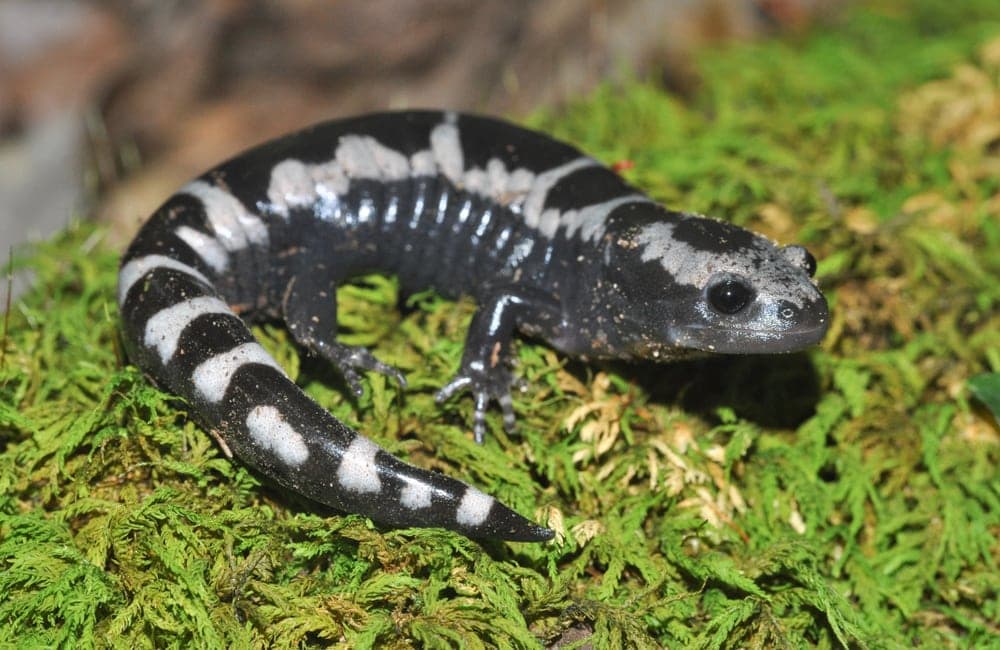
The marbled salamander is found in damp woodlands in the eastern United States. Adult marbled salamanders grow to approximately 4 inches (0.1 meters) in length and are black or dark brown with silvery-white bands across their back.
Marbled salamanders differ from other species in the Ambystomatidae family: instead of breeding in permanent water sources in the spring, marbled salamanders breed entirely on land in the fall. The female will bury fertilized eggs in small depressions and stay with the eggs, keeping them moist, until the nest becomes flooded from rain.
5. Amphiumidae Family – Congo Eels
Salamanders in the Amphiumidae family are commonly called Amphiumas or Congo eels. This family is characterized by aquatic, eel-like salamanders up to 3 feet (9 meters) in length. Amphiumas still have all four legs, but these limbs are small and often have fewer digits. Salamanders in the Amphiumidae family bury themselves in the mud when their body of water goes dry and can go up to three years without food.
5.1 Two-toed amphiuma, Amphiuma means
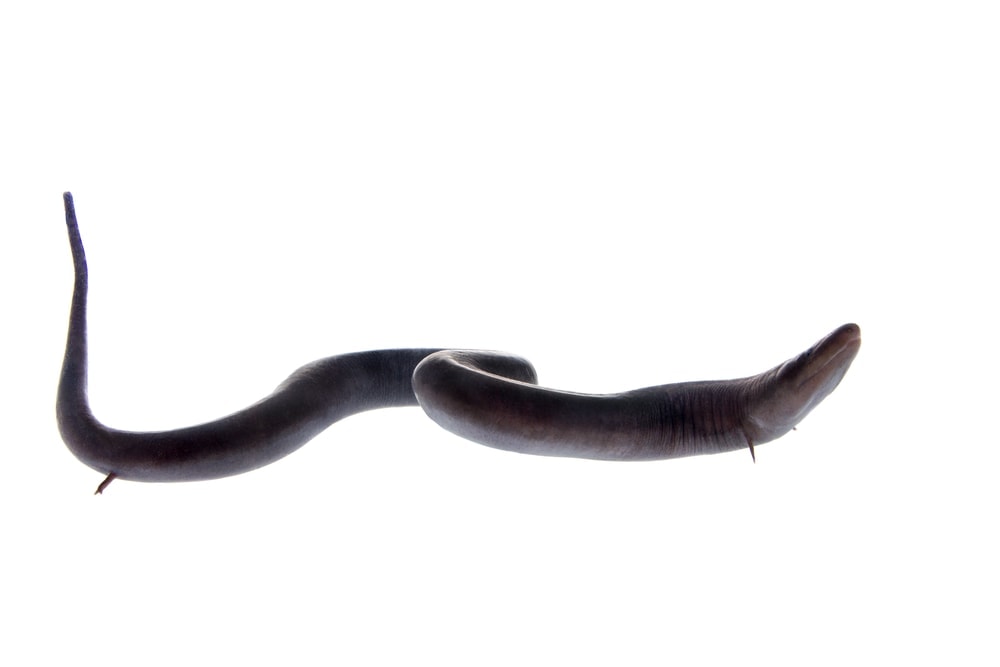
The two-toed amphiuma grows to between 14 and 30 inches (0.4 – 0.8 meters) in length at adulthood and is semi-aquatic. This salamander’s name comes from its morphology, as there are two toes on each foot. While technically able to crawl through swampy land on their small legs, two-toed amphiuma spend most of their life in water. These salamanders can be found from New Orleans to southeastern Virginia in swampy woodlands.
6. Dicamptodontidae Family – Giant Salamanders
The Dicamptodontidae family includes Giant Salamanders. Salamanders in this family are the largest terrestrial species of salamanders, growing up to 13 inches (0.3 meters) in length. These salamanders are generally nocturnal and live only in wooded areas with permanent streams in the western United States.
6.1 Pacific giant salamander, Dicamptodon tenebrosus
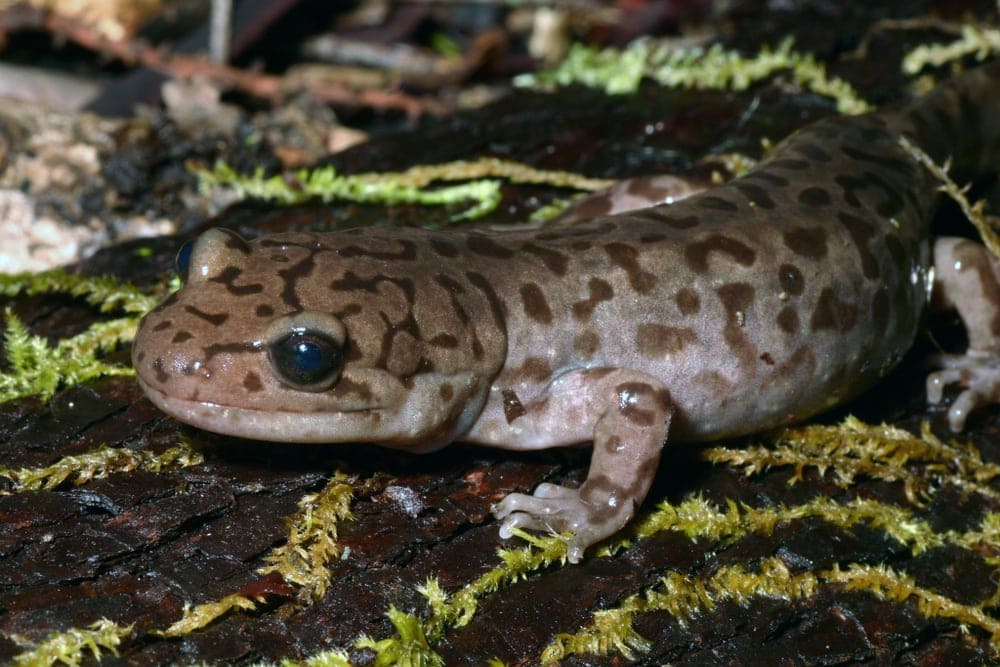
The Pacific giant salamander is the largest terrestrial salamander in the world and lives exclusively in damp, dense forests in the Pacific Northwest region of the United States. These salamanders are brown with purplish mottling on the backs and a cream underside.
Pacific giant salamanders are unique in several ways: they growl or bark when threatened, often cause a painful bite when handled, and have been observed to climb up to 8 feet (2.4 meters) into the trees. Adults will hibernate in the winter when weather conditions get cold enough, and have been found up to 20 feet (6 meters) underground during this time.
7. Rhyacotritonidae Family – Torrent or Seep Salamanders
The Rhyacotritonidae family includes salamanders commonly known as torrent salamanders or seep salamanders. Species in this family are small (usually less than 8 inches [0.2 meters] in length), semi-aquatic salamanders that are only found in humid conifer forests in the Pacific Northwest region of North America.
7.1 Southern torrent salamander, Rhyacotriton variegatus
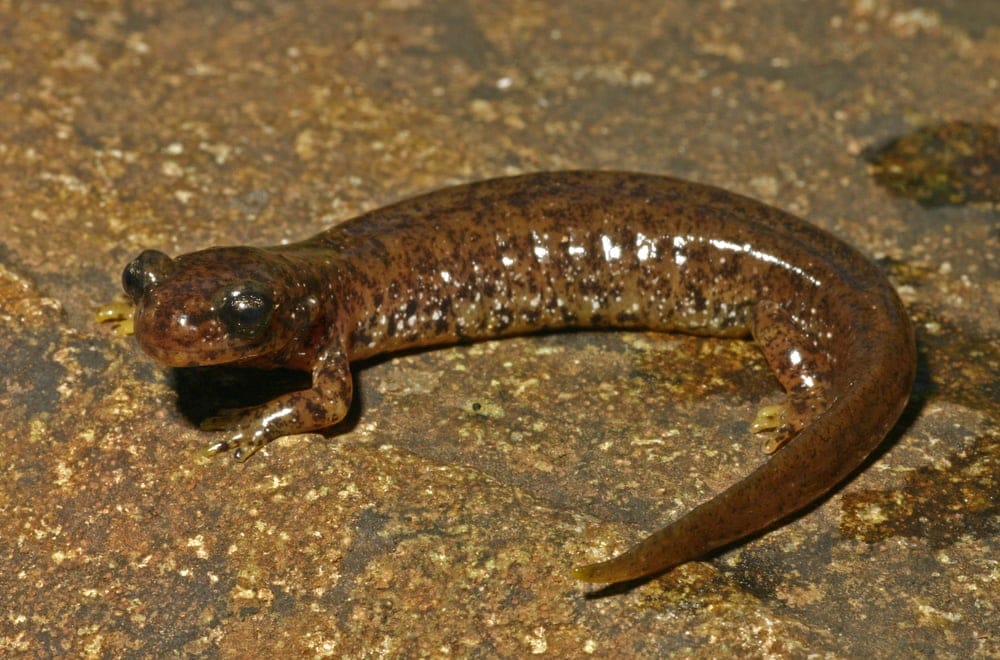
Southern torrent salamanders are about 4 inches (10.16 cm) in length and can be found in the coastal regions of Oregon and Northern California. These salamanders appear camouflaged with their speckled brown back, but have a bright yellow underside. It can take up to four and a half years from when eggs are laid to the time Southern torrent salamanders become sexually mature adults.
Suborder Cryptobranchoidea (Giant Salamanders)
The suborder Cryptobranchoidea includes two families, outlined below. This suborder includes the largest salamanders in the world, all of which are aquatic.
1. Cryptobranchidae Family – Giant Salamanders & Hellbenders
The Cryptobranchidae family includes giant salamanders and hellbenders. Salamander species in this family can weigh up to 25 pounds (11 kilograms) and have a wide range of colorations, from brownish gray to yellow, green, and orange.
Cryptobranchidae salamanders are generally nocturnal and are found in montane regions of China and Japan, and in southeastern United States.
1.1 Hellbender, Cryptobranchus alleganiensis
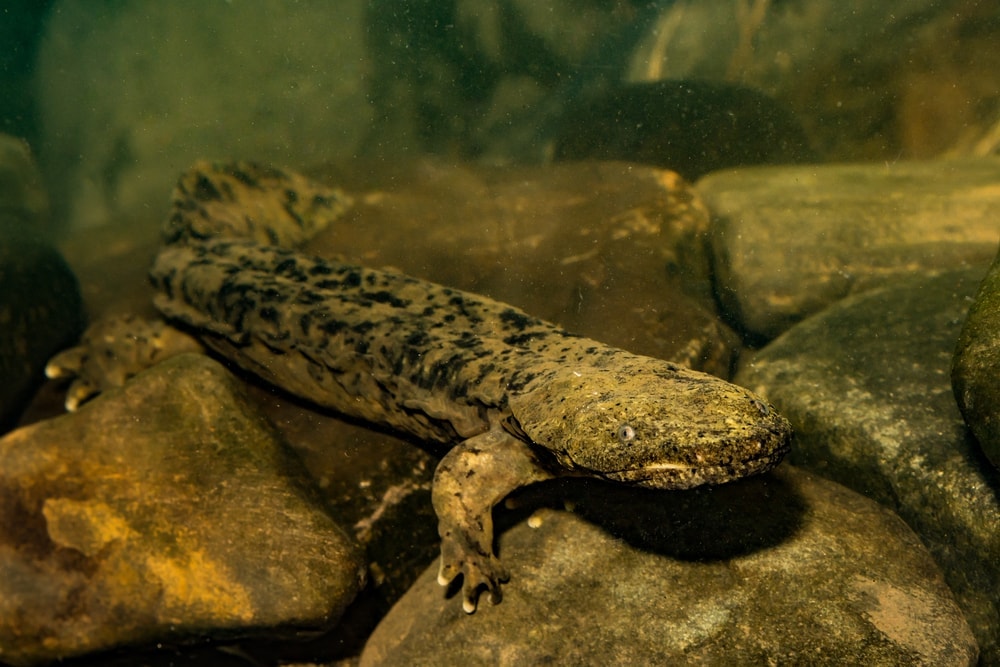
Hellbenders are the largest salamanders in North America, with adults growing up to 30 inches (0.8 meters) long. This salamander species is completely aquatic and is greenish-brown or gray with black spots. Hellbenders have a wrinkly body, which is used to absorb oxygen through the skin. Respiration through the skin is the main mode of oxygen intake for hellbenders even though adults have lungs and larvae have gills.
A common misconception is that hellbenders are poisonous. This is untrue, but their teeth are sharp enough to pierce human skin. Hellbenders were a traditional food source for Native Americans.
In the Ozarks in the eastern United States, hellbenders are endangered due to habitat destruction and stream pollution.
1.2 Chinese giant salamander, Adrias davidianus
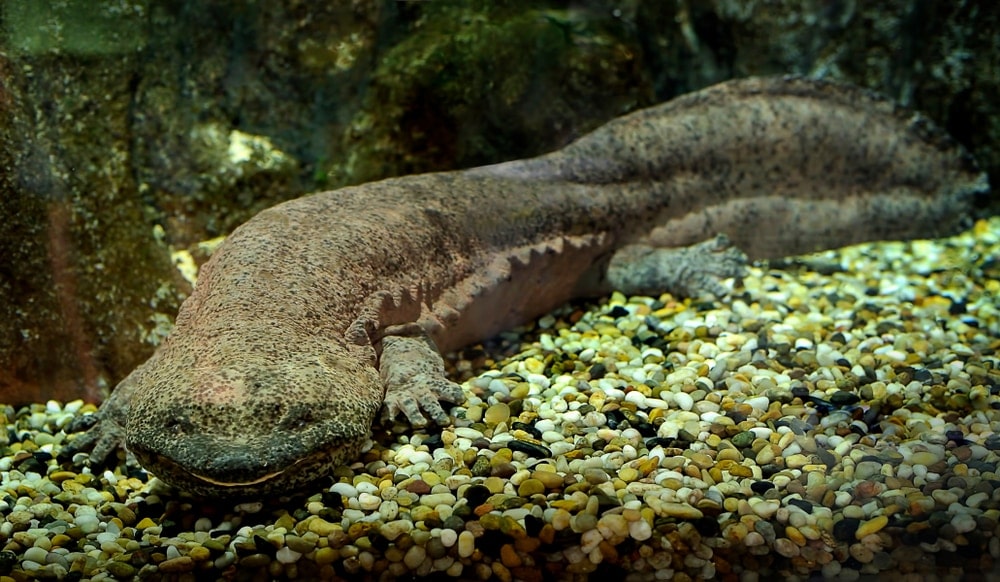
The largest species of salamander in the world, Chinese giant salamanders can grow up to six and a half feet (2 meters) in length. Chinese giant salamanders are very similar to hellbenders, in that they collect oxygen solely through their skin and have a wrinkly body to increase surface area and help with oxygen absorption.
Chinese giant salamanders have a mottled gray, green, and brown body that allows them to be camouflaged with their river bottom homes. These salamanders are the apex predators in their food chain, with no natural animal predators. Humans are the biggest threat to Chinese giant salamanders, as they are considered a delicacy.
2. Hynobiidae Family – Asiatic Salamanders
The Hynobiidae family includes Asiatic salamanders, with a wide range of size and habitats. This family includes both aquatic and terrestrial salamanders, with all species undergoing a complete metamorphosis from the larval to adult phases.
Although Chinese giant salamanders and the closely related Japanese giant salamanders are only found in Asia and could be considered Asiatic salamanders, these giant species are more closely related to the hellbender and are classified as members of the Cryptobranchidae family.
2.1 Persian mountain salamander, Paradactylodon persicus
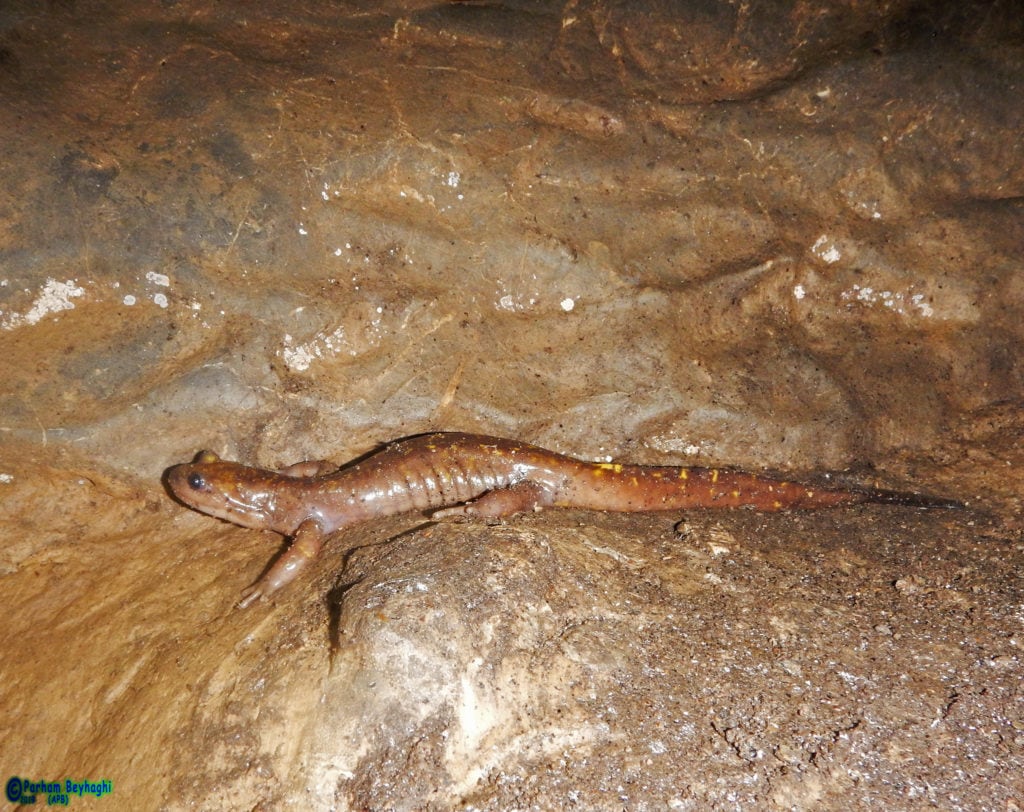
The Persian mountain salamander has a very specialized range, only found in the Talysh and Elburz Mountains in Iran, with possible sightings in Azerbaijan. This salamander species is specialized to live on the slopes of montane, fishless streams in broadleaf forests and in caves in the region.
Little is known about the Persian mountain salamander because the range they inhabit is so small, although it is suspected that more than a year is spent in the larval phase and that hibernation does not occur due to year-round warm, wet conditions.
Suborder Sirenoidea (Sirens)
The third suborder, Sirenoidea, has only one family.
1. Sirenidae Family – Sirens
Salamanders in the Sirenidae family undergo paedomorphosis rather than a full metamorphosis between the larval and adult stages, so adult sirens have both gills and lungs. Sirens are unique from other salamanders in that they have no hind legs, and have horned beaks instead of teeth.
1.1 Reticulated siren, Siren reticulata
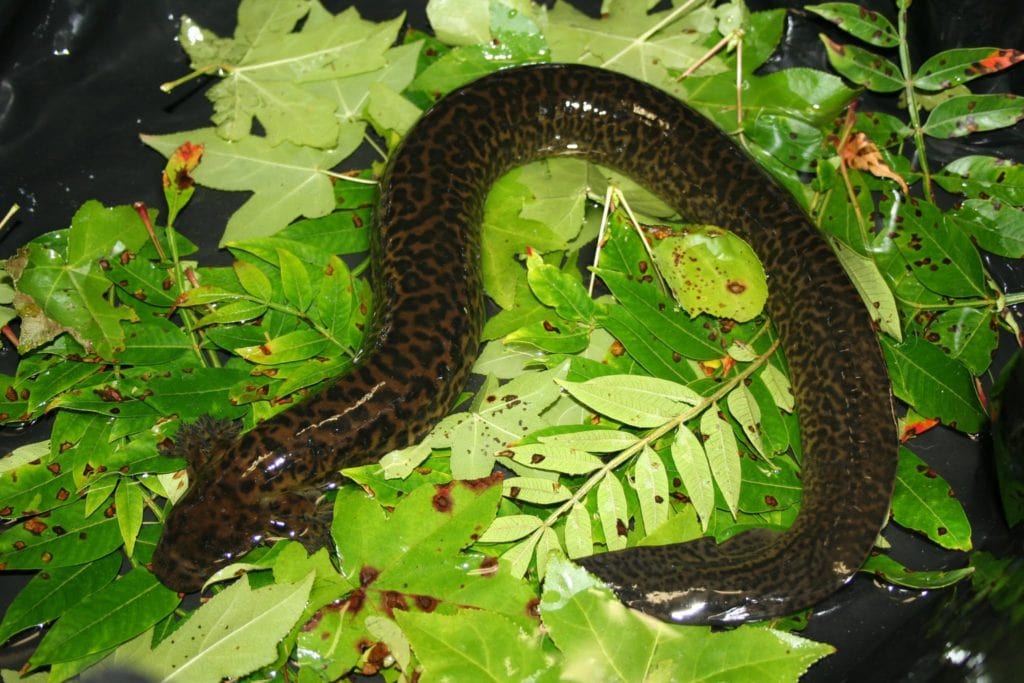
The reticulated siren was discovered in Florida swamps. This species grows up to 2 feet (0.6 meters) in length and has a gray body with darker spots. Little is known about the life cycle and diet of this salamander species because they prefer murky water and spend their whole lives at the bottom of swamps.
You May Also Like: Understand These 21 Different Types of Rattlesnakes with Photos, Guide, Cool Infographics, and More!
The Complete Salamander Guide
Life cycle
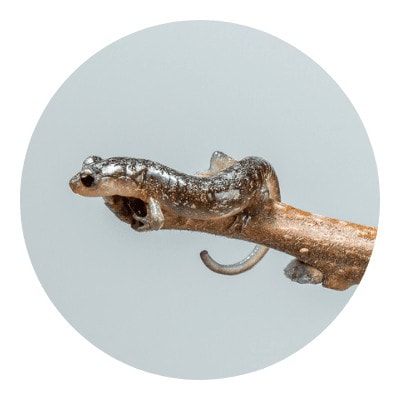
Salamanders have a similar life cycle as other amphibians, with phases including egg, larvae, and adult body forms. The length of the life cycle from egg to adult depends on the species, ranging from a few months to a few years.
Most salamander species have a biphasic life cycle, meaning they have physiologically unique larval and adult phases. Almost all species of salamanders undergo a full metamorphosis to transform from aquatic larvae to terrestrial adults.
Some species only have a partial metamorphosis called paedomorphosis and retain some larval features into adulthood. The lifespan of a salamander ranges from 3 to 25 years, with some individuals being recorded to live up to 55 years.
Diet
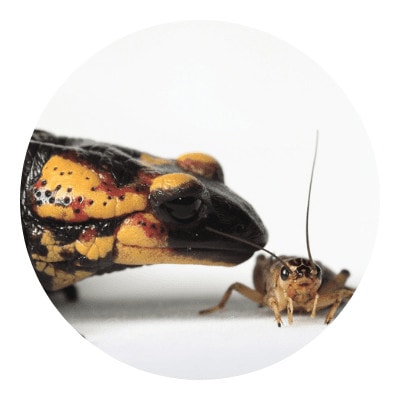
All salamanders are carnivores. Depending on their habitat, salamanders commonly eat insects, worms, snails, and other small animals. Some species will even eat other salamanders. Generally, prey choices are determined by what is available in their habitat and what fits inside their mouth.
Habitat and range
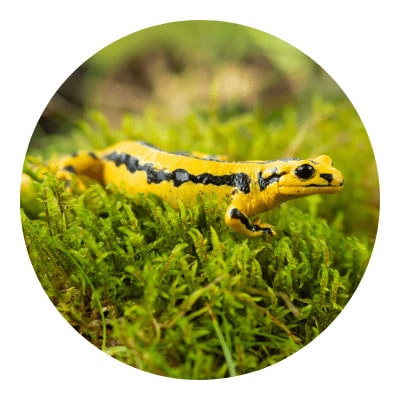
Salamanders are primarily found in freshwater and damp woodlands. Most salamander species are found in temperate regions of the Northern Hemisphere, with some species living in tropical ecosystems.
While there are a few exceptions, salamanders are generally abundant in temperate North America, Western Europe, Japan, and China.
The United States has the largest number of different salamander families, with nine of the ten salamander families found in the United States. The Hynobiidae family (Asiatic salamanders) are the only family not found in the US.
Skin colors and designs
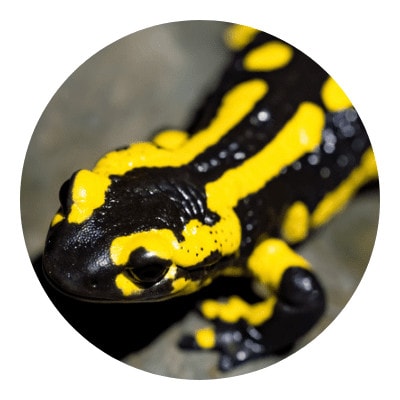
Most salamanders have neutral brown and green coloring to provide camouflage in their forested habitats. Many salamanders have stripes or spots in a darker color, which also enhance camouflage. Tropical species are an exception, using brightly colored skin to warm predators of their highly toxic skin.
You may also like: Meet the 21 Amazing Types of Spiders in the World and Where You’ll Find them: Complete with Images, Descriptions, and More!
Can salamanders lose their tails?
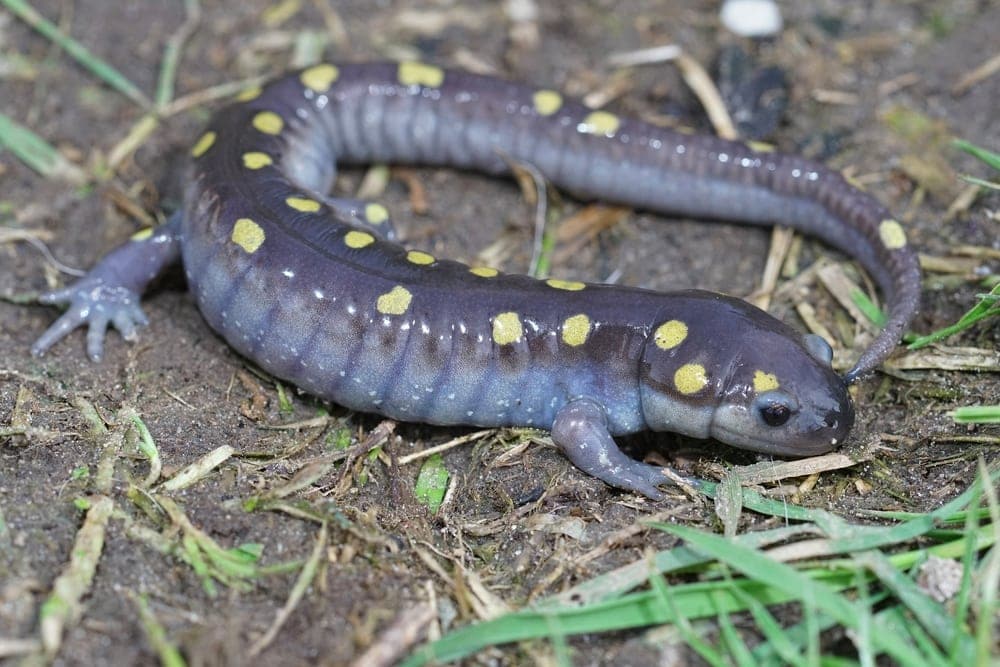
All salamanders have the potential to regrow lost limbs, including legs and tails. This behavior is most well-known in axolotls, which have been observed to regenerate not only lost tails and legs, but also some internal organs including lungs and ovaries within a matter of weeks.
This ability seems to be tied to their life cycle: when axolotl populations were large the larvae would hatch in mass, creating immediate competition upon hatching. Their ability to regenerate helped individuals stay alive beyond the larval stage to more effectively continue population growth.
Scientists are studying what happens at a cellular and genetic level when salamanders regrow limbs, hoping to apply these findings to the medical field.
You may also like: Check out These 19 Unique Types of Eels and Learn Everything About Them: Complete with Images, Descriptions, Classifications, and More!
Natural Predators of Salamanders
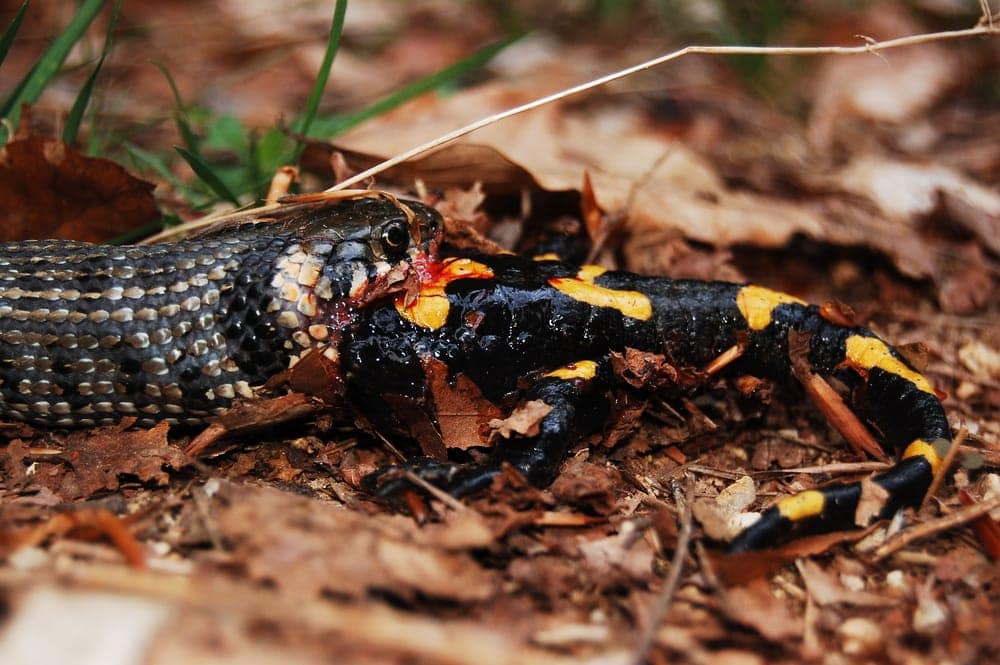
A salamander’s natural predator depends on its habitat. Salamanders that live in woodlands may be prey for snakes, turtles, birds, and mammals. Salamander species that are purely aquatic are often prey for larger fish and even frog species.
In some cases, salamanders are at the top of their food chain and have no natural predators. This is more common for species that live in caves and other secluded habitats.
You May Also Like: Love Them or Hate Them, There Are 25 Amazing Types of Snakes You Need to Explore!
Do Salamanders Hibernate in the Winter?
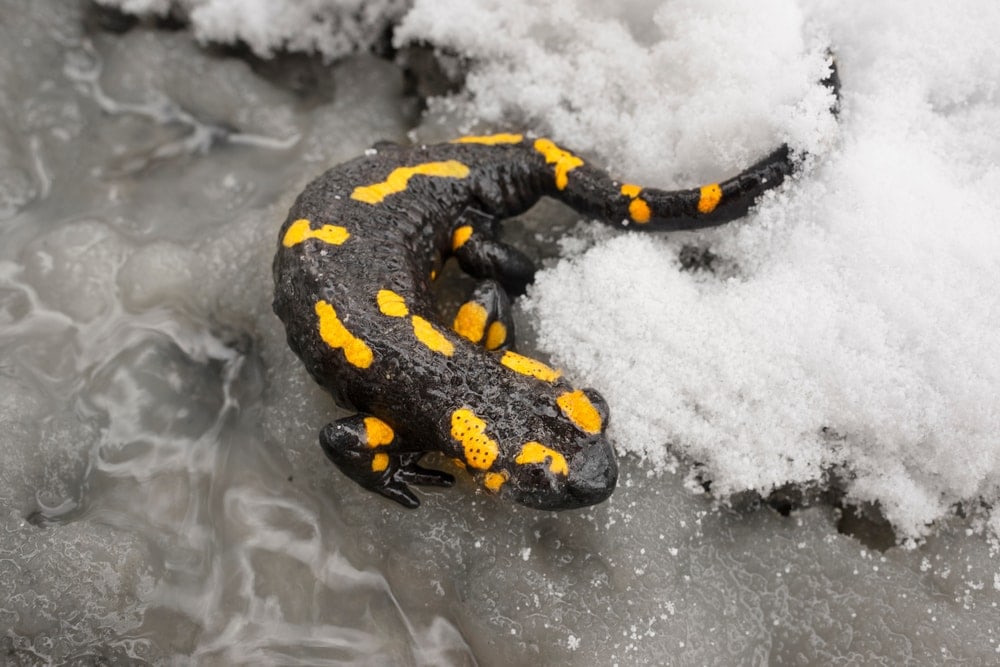
Many salamander species will hibernate in the winter. Like all amphibians, salamanders are cold-blooded. Species that live in colder climates will hibernate when the temperature goes below freezing. Most hibernating species will bury themselves underground or beneath leaf litter.
Tropical and sub-tropical species don’t need to hibernate because the warmer temperatures allow them to function normally throughout the entire year. A few salamander species like the Iranian harlequin newt live in very dry climates and will also hibernate during the dry season.
You may also like: Learn the Similarities and Differences Between Turtle vs Tortoise and Know How to Identify Them: With Images, Chart, Descriptions, and More!
Cultural Symbolism and Salamander Myths
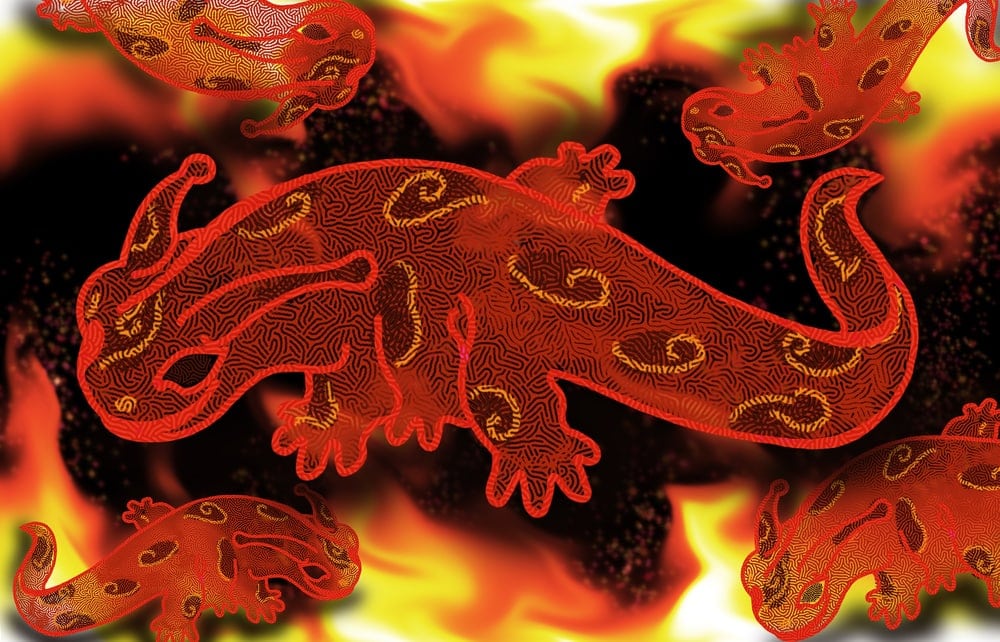
Salamanders have been represented in mythology, folklore, and legends of several different cultures. Salamanders have been tied to fire by early philosophers and Chinese legends, being represented as fire elementals and being said to be born of or live inside a fire.
This myth likely started in Europe as salamanders that hibernated in and under rotting logs were seen leaving fireplaces when their hibernation spots were brought in for the household’s fire.
You May Also Like: Understand the Different Colorful Types of Stink Bugs with Photos, Fun Facts, Infographic & More!
Environmental Threats: Habitat Loss

Around half of the salamander species in the world are listed as threatened or endangered by the IUCN, with an additional 62 species listed as near-threatened as population size decreases.
Habitat loss is the highest threat to salamander populations. Salamanders require habitats that are usually unsuited for other uses such as woodlands, wetlands, and temporary lakes. As these ecosystems are repurposed for agriculture, development, and other uses, salamanders have no suitable habitat left.
Habitat fragmentation and degradation also threaten salamander populations even when suitable wetlands or forests are available. Habitats become fragmented when the original range is no longer connected, creating isolated populations and weakening the gene pool.
Habitats become degraded through deforestation and other less invasive measures that don’t completely repurpose the habitat, but make enough small changes that salamanders are no longer able to survive.
You may also like: Learn the 9 Different Types of Snakes You Can See in Texas: Complete with Images, Facts, Descriptions, & More!
Impact of Climate Change

Salamanders are being affected by climate change in regions where temperatures are increasing and precipitation is decreasing. These warmer, drier habitats are no longer suitable for salamanders.
In these areas, salamanders that live at lower elevations have been observed to increase in body size to adapt to the warmer weather.
Salamanders that live at high elevations are associated with microclimates that are cool and damp. These species become easily stressed when the temperature increases and the habitat becomes drier.
Climate change can also affect salamanders that live in lakes and streams. Salamanders are very sensitive to changes in water chemistry because their skin is permeable. As the water chemistry of these lakes and streams changes due to eutrophication (an increase of algae due to warmer temperatures) and pollution.








